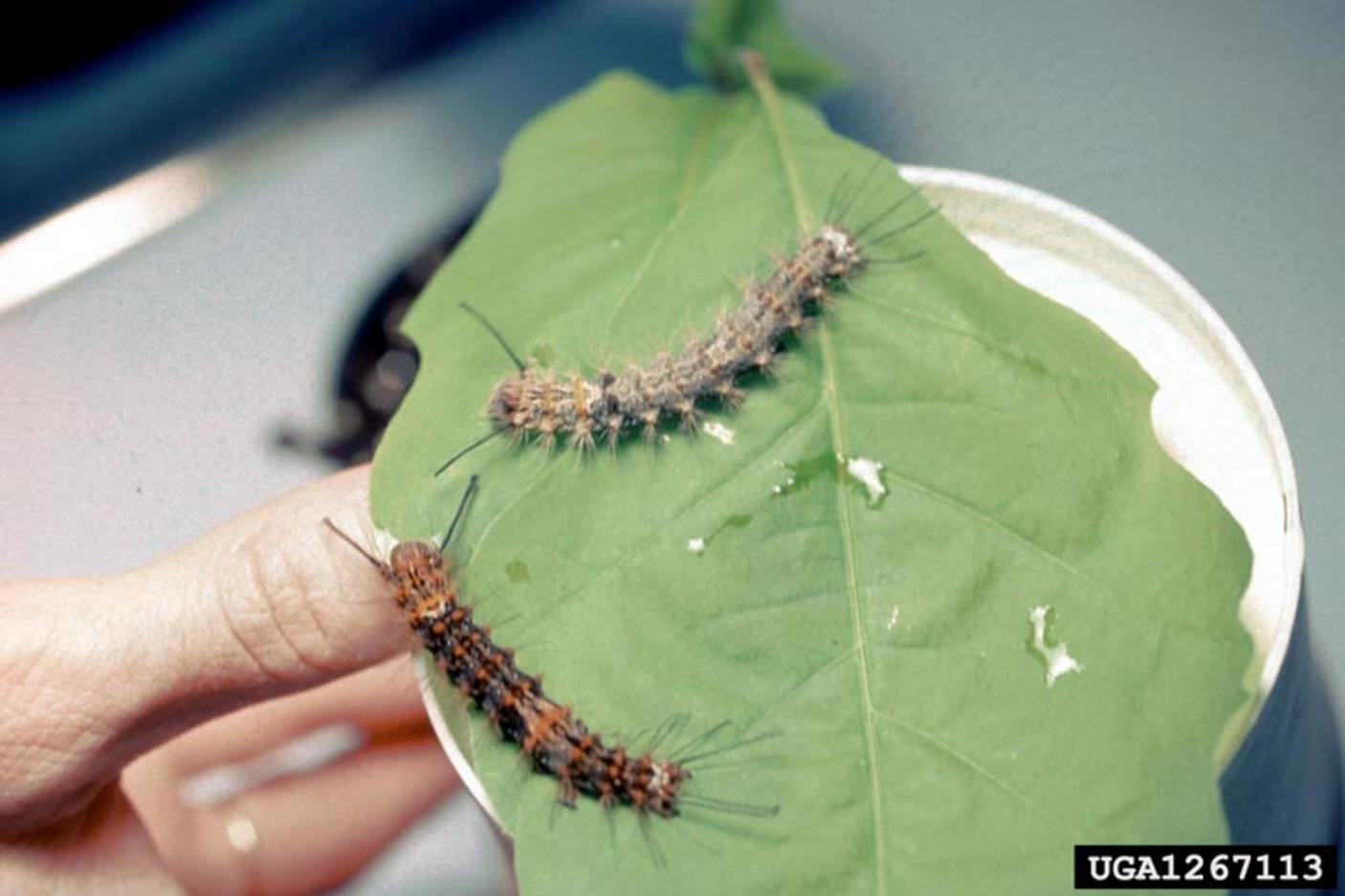
Pink gypsy moth
| Primefact number | Edition | Published | Author |
|---|---|---|---|
| 1515 | First | Jan 2016 | Plant Biosecurity and Product Integrity |
![Figure 1. Female pink gypsy moth [wingspan 70−90 mm] (Image: Bettaman, Shipher Wu, flickr.com) Female pink gypsy moth with wings expanded showing white and grey patterning of forewing and pink colouring of hindwing](https://www.dpi.nsw.gov.au/__data/assets/image/0008/804590/PinkGypsyMoth1.jpg)

Pink gypsy moth (Lymantria mathura) is an exotic plant pest not present in Australia. This pest is a serious threat to Australia’s forestry and various horticultural industries.
Pink gypsy moth, also known as rosy gypsy moth, belongs to the Lymantria genus of moths, generally known as gypsy moths. A number of Lymantria species, including pink gypsy moth, are considered serious pests of forestry industries worldwide.
In countries where pink gypsy moth is established, the species undergoes periodic outbreaks, roughly every four years, causing significant damage to forests.
Notifiable status
If you suspect pink gypsy moth:
- Call the Exotic Plant Pest Hotline 1800 084 881
- Email biosecurity@dpi.nsw.gov.au with a clear photo and your contact details
- Report online: online form
Description
Adults
Male and female pink gypsy moths are different in appearance. The males are smaller with a wingspan of 40–50 mm. The male forewings are beige with dark-brown markings and the hind wings are yellowish.
The females are larger than the males with a wingspan of 70–90 mm. The females are light beige and markings on the wings are less prominent than on the males. The female hind wings and top half of the abdomen have a pinkish or rosy appearance, giving the moth its name.
Larvae
Pink gypsy moth larvae are hairy and grow to 60 mm long. They have one pair of long, thick hairs at the head and 2–3 pairs at the tail.
Mature larvae vary in colour from ash grey with transverse yellow bands on the thorax to brown with a double row of orange spots (Figure 2).
Eggs
Eggs are spherical and 1 mm in size, deposited in masses in bark crevices. The egg masses are covered by transparent froth-like secretions, not by female hairs as is common with other Lymantria species.
Damage
Larval feeding damage on host plant leaves is the most obvious symptom of pink gypsy moth attack. Feeding damage appears as holes in the leaves or irregular leaf margins. As larvae grow, whole leaves may be consumed. Each larva consumes about 1m2 of leaves in its life time.
At low levels, the larvae do not impact on the general health of trees, but at outbreak levels they can completely defoliate trees.
Large, eruptive populations of pink gypsy moth can occur in cycles every few years. Stress associated with feeding damage can result in reductions in tree growth, dieback and tree death. Tree death is often associated with other insects and pathogens that attack the stressed trees.
Lifecycle
Pink gypsy moth larvae emerge at the end of spring after overwintering as egg masses. Newly hatched larvae generally remain on the egg masses for several days before climbing into branches to feed.
Larvae undergo six development stages while continuing to feed. Pupation occurs in the middle of summer on leaves and branches.
Adults emerge over the end of summer and beginning of autumn. Females generally produce a number of egg masses from one mating event totalling 150–600 eggs. Eggs are deposited in masses of about 200 eggs bark crevices. Adult moths do not feed and live for less than a week.
Generally one generation is seen per year but the number can vary depending on location. For example, in India, pink gypsy moth has two generations per year. The larvae are active in the middle of spring and again during the mid-summer monsoon season.
Host range
Pink gypsy moth is primarily a significant pest of timber production, including Pinus species.
In addition to Pinus species, other commercial plant commodities that host pink gypsy moth include apple, chestnut, mango, lychee and walnut.
Other ornamental and environmental tree hosts of pink gypsy moth include birch, douglas fir, elm, fir, larch, oak and willow.
Spread
Pink gypsy moths are dispersed naturally either by adults flying or, more commonly, by wind dispersal of young larvae on silk webbing. Larvae move into the branches of a tree, spin a thread of silk and suspend themselves from the threads which eventually break. The larva is then carried by the wind. While most larvae will not move more than 200 metres, some are reported to travel several kilometres.
Long distance dispersal of pink gypsy moth can occur with the movement of plant material infested with eggs or larvae, or on packaging and vessels. Adults are readily attracted to lights and egg masses have been detected on ships and shipping containers in Europe.
Distribution
Pink gypsy moth is widespread in eastern and Central Asia.
Actions to minimise risk
Put in place biosecurity best practice actions to prevent entry, establishment and spread of pests and diseases:
- practice “Come clean, Go clean”
- ensure all staff and visitors are instructed in and adhere to your business management hygiene requirements
- source propagation material of a known high health status from reputable suppliers
- keep records

